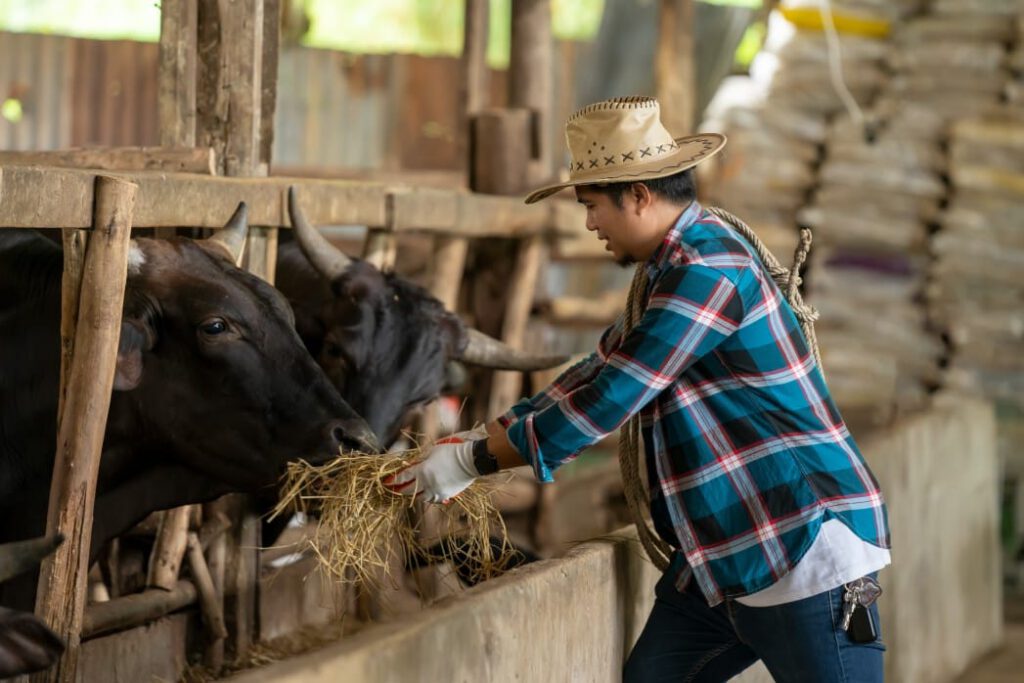PFAS, or Per- and Polyfluoroalkyl Substances, are a group of chemicals that have been used in a number of industries for many years. Unfortunately, it is now becoming more understood just how harmful PFAS can be to both human health and the environment.
In this blog post, we will discuss how PFAS affects livestock through the trickle-down effect. We will also explore how water contamination lawsuit attorneys at Napoli Shkolnik can help if you have been affected by PFAS. If you would like to learn more about this issue, please reach out to us!
What Are PFAS?
As mentioned, PFAS are a group of manmade chemicals that have been used in many industries and consumer products since the 1940s, because of their useful properties. They are often referred to as “forever chemicals” because they do not break down easily in the environment. PFAS break down slowly and may accumulate in people, animals, and the environment over time, making this a common concern.
PFAS can be found in our water, soil, air, and food as well as in materials found in our homes or workplaces, including:
- Drinking water
- Soil and water at or near waste sites
- Fire extinguishing foams
- Manufacturing or chemical production facilities that produce or use PFAS
- Food
- Food packaging
- Household products and dust
- Personal care products
- Biosolids
Why Are PFAS Harmful?
There are a number of reasons why PFAS can be harmful. One of the main ways that they can affect health is through exposure to drinking water. It is important to note that not all PFAS are the same, and some may be more harmful than others.
Several health effects, including liver and immune system damage, high cholesterol, blood pressure elevation, thyroid disorders, pregnancy-induced hypertension and preeclampsia, and testicular and kidney cancer have been associated with higher PFOA/PFOS levels.
How PFAS Affect Clean Water Systems
A major concern with PFAS is that they can pollute our clean water supplies. One way this happens is when PFAS-containing products, like firefighting foams, are used. The chemicals can then enter the environment through runoff, seep into groundwater, and eventually end up in our drinking water.
Another way that PFAS can enter our water supply is through the release of PFAS-containing wastewater from factories and other facilities. This wastewater can contaminate both surface water and groundwater, which are important sources of drinking water for many communities and agricultural businesses.
How this Affect Livestock
One way that livestock can be affected by PFAS is through the ingestion of contaminated water or food. Another way is when animals come into contact with PFAS-containing products, like firefighting foams.
This is of particular concern in dairy cows, as the PFAS could potentially be passed through to milk that then reaches consumers. If the concentration of PFAS is large enough, even livestock used for meat consumption could pass these harmful substances on. However, one major source of concern is that testing to adequately gauge the safety level of these substances in meat and milk products is still being developed.
Through this trickle-down effect, PFAS pass from contaminants into groundwater or soil, then into livestock, then into people. And because the chemicals don’t break down, once an ecosystem is contaminated, it becomes very difficult to turn the situation around. PFOA has no half-life; it does not leave once it enters the body.
There is no safe exposure level for PFOA; even incomprehensibly tiny amounts of these substances, like a few parts per billion, can affect immune systems and overall health. And some attempts at water purification to remove PFOA have only been able to decrease the amount of PFOA in water by as little as one part per billion.
One example of PFAS or PFOA studied in animals comes from the early 1960s, when DuPont scientists learned that PFOA increased animals’ liver sizes. One of the first major PFOA lawsuits involved a West Virginia cattle farm. According to graphic video evidence presented at trial, the landowner removed “two dead deer and two dead cattle . . . The blood ran out of their noses and out of their mouths.”
As more research is conducted, it is likely that we will learn about other ways that these chemicals can harm animals and ecosystems.
How Napoli Shkolnik Can Help
If you or your business have been affected by PFAS water contamination, the attorneys at Napoli Shkolnik can help. We have experience handling these types of cases and we will fight to hold negligent parties responsible. Contact us today to learn more.
